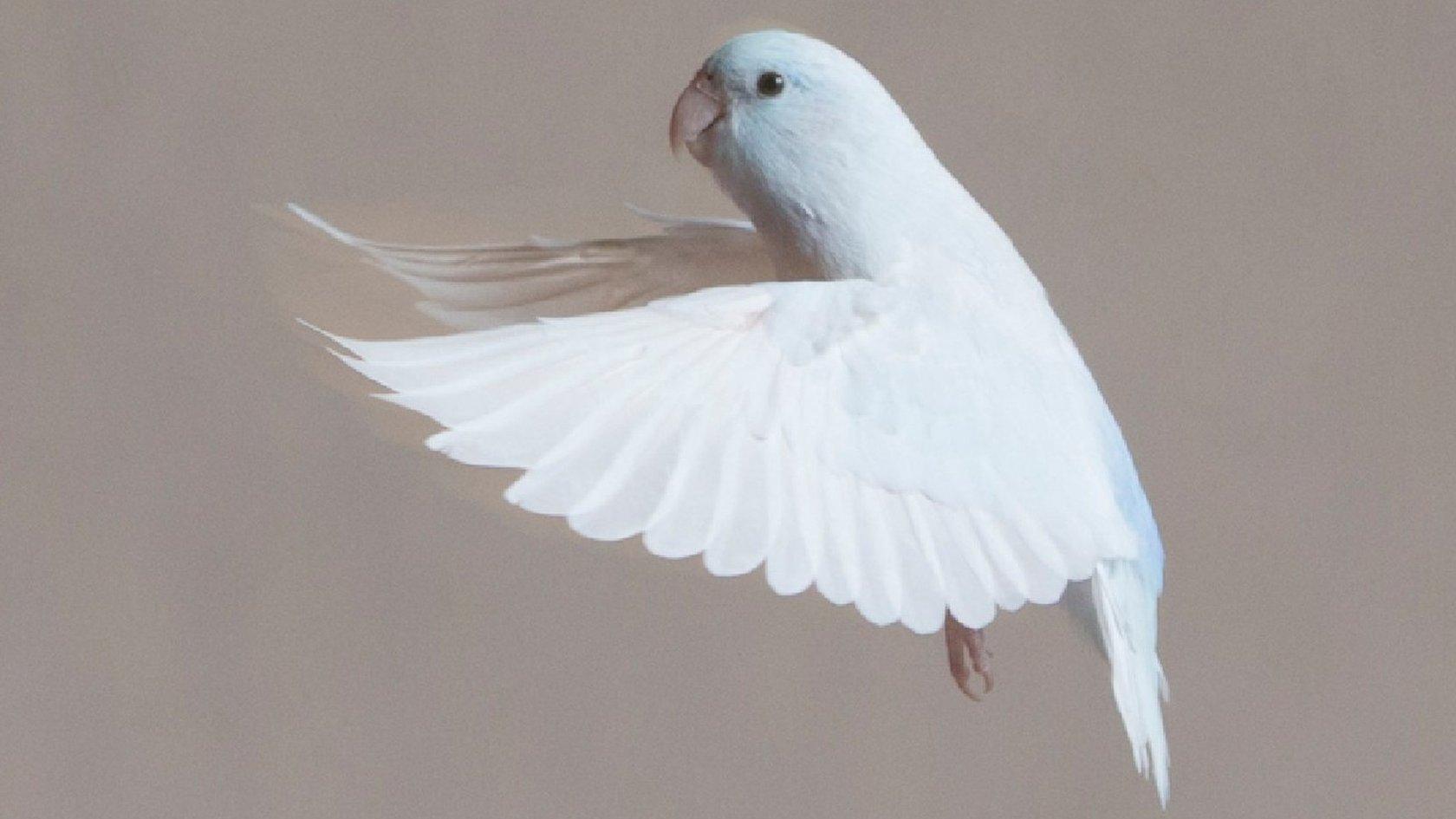Bar-headed geese: Highest bird migration tracked
- Published
A tracking study has revealed the secrets of the world's highest bird migration - the Himalayan flight of the bar-headed goose.
The geese have been recorded at heights of more than 7,000m (23,000ft).
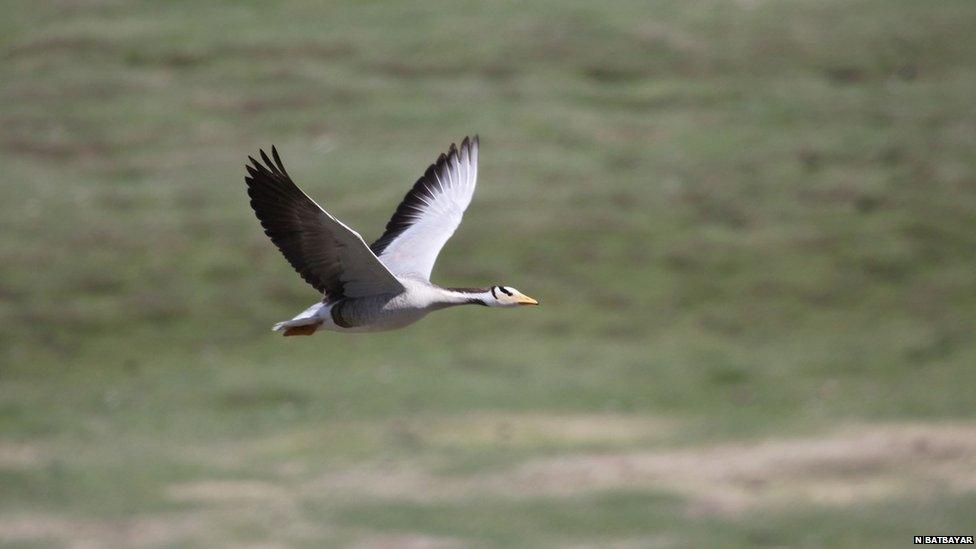
Now, a team led by researchers from Bangor University, external has tracked the flight and revealed the basis for the birds' "rollercoaster flight" pattern.
The findings, published in Science, external, show how the birds hug the mountainous terrain, and that this saves energy.
Bar-headed geese have fascinated biologists for decades.
They achieve physiological feats that seem impossible - flying at extreme altitude, where there is less than 10% the oxygen found at sea level.
In previous tests, the researchers trained the birds to fly in wind tunnels and to wear masks that monitor their oxygen intake
George Lowe, the New Zealand born climber who supported Edmund Hillary and Tenzing Norgay's ascent in 1953, said he had seen the geese flying over the top of Mount Everest - the peak is approximately 29,000ft.
And, using GPS trackers, this team has recorded one bird flying at 24,000ft.
The implanted devices also measured the acceleration, body temperature and heart rate of seven geese, caught in central Mongolia.
Data from these devices enabled the scientists to work out the birds' energy use, as well as tracking what they called their "rollercoaster" flight pattern.
While rising and falling may seem wasteful - losing hard-earned altitude, just to climb again later - these unique trackers revealed the reasons behind it.
Lead researcher Dr Charles Bishop, from Bangor University in Gwynedd, told BBC News: "When we looked at the heart rate, [it was] going up with altitude quite quickly. So flying high is really difficult.
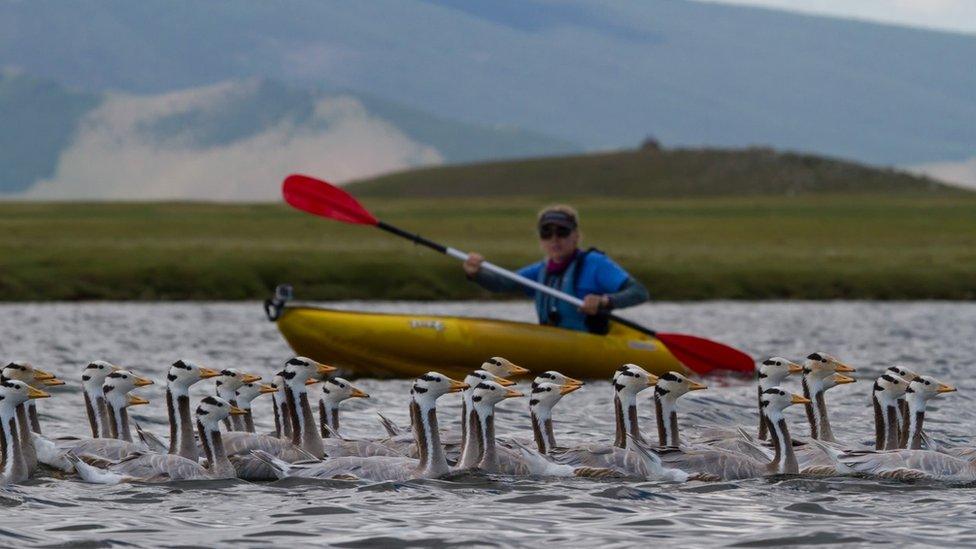
Dr Lucy Hawkes had to round up wild geese in order to study them
"When we calculated what it would be like if they went up to 6,000m and stayed there, that was more expensive than hugging the ground."
He said that the geese also appeared to take advantage of deflections of wind off ridges to gain extra lift.
Even more remarkable, Dr Bishop says, is that the birds do not seem to benefit from any tail winds, and they do not soar.
"They never stop flapping their wings," he said. "And one or two [of the flights we tracked] were up to 17 hours long."
Flapping flight is an energy-intensive activity and, at high altitudes, it is even more challenging to generate lift in very thin, low density air.
Dr Lucy Hawkes, from the University of Exeter, a member of the research team, explained that in their previous studies of the birds, the researchers had found that they would often fly at night, "when the air is colder and denser".
"This would reduce the cost of flight compared to the daytime," she explained.
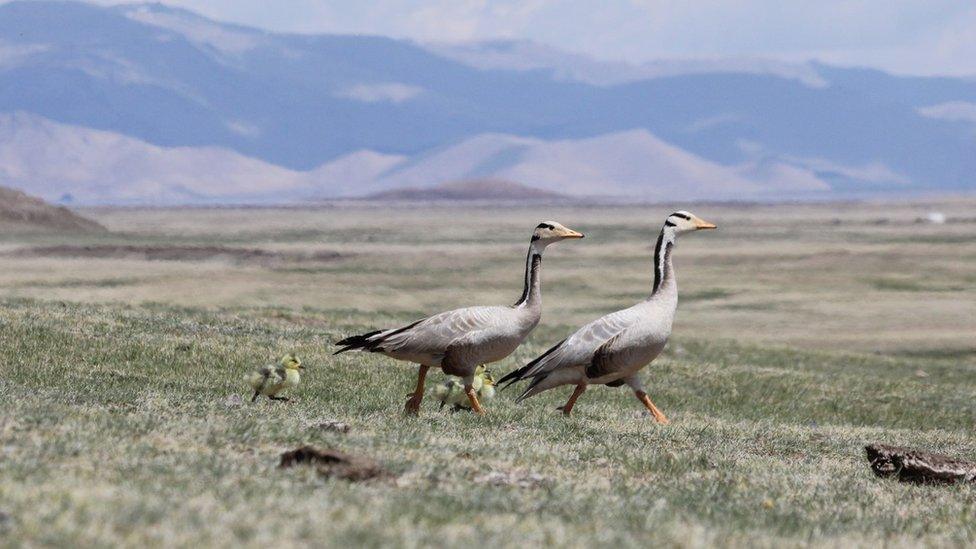
Bar-headed geese migrate via the highest mountain range on Earth - the Himalayas
Dr Bishop added that these geese may represent "the limit" of what birds are capable of.
"They have found a way to cross the world's longest and highest land mass - over 1,500km [930 miles] - relatively easily."
"They don't train or acclimatise," he said. "They could walk on the top of Everest and have no problem at all."
He and other biologists hope, eventually, to understand the genetics of what makes these animals able to perform energetic feats at such high altitudes.
- Published16 January 2014
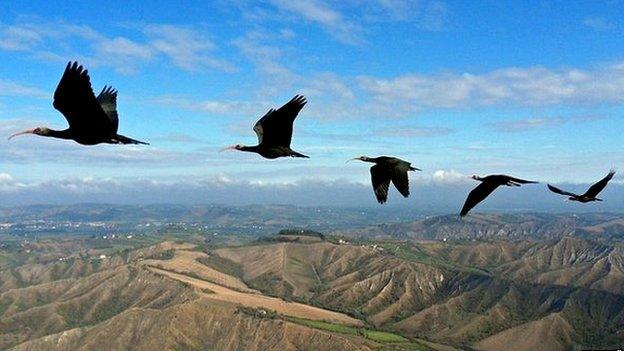
- Published14 January 2015
